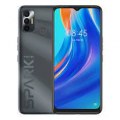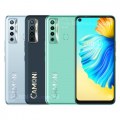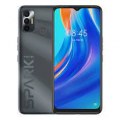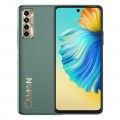- Technology Bangladesh
- Main Catalog
- Mobiles
- Tecno spark 6
Tecno spark 6



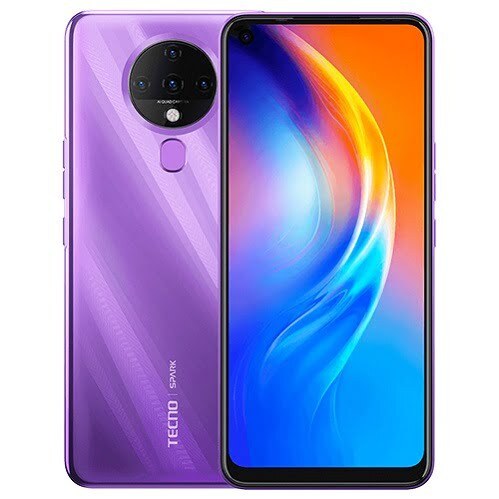








-
CPU: Mediatek Helio G70 (12 nm)
-
RAM: 4 GB
-
Display: 6.8 inches
-
Camera: 16MP 1440
-
Battery: 5000mAh Li-Po
Specifications
Launch
| Announced | September, 2025 |
| Status | Available |
Software / Hardware
| Operating System OS => Every computer system run on a base software called Operating System (OS). Operating System controls all basic operations of the computer (such as smartphone, PDAs, tablet computers and other handheld devices). The Operating System allows the user to install and run third party applications (apps), apps are used to add new functionality to the device. | Android 10, HIOS 7.0 |
| Chipset Chipset is a group of integrated circuits designed to perform one or a more dedicated functions, often with real time computing constraints, Popular smartphones are equipped with more advanced embedded chipsets that can do many different tasks depending on their programming. | Mediatek Helio G70 (12 nm) |
| CPU CPU (Central Processing Unit) mostly known as processors, CPU processes instructions in order to carry out certain functions that make your device operate properly. Processors are often described as the brain of computers, smartphones and tablets, Smartphones and tablets rely on processors to carry out their every task, Processors are an incredibly important factor in selecting any type of computing device, including your smartphone. | Octa-core (2x2.0 GHz Cortex-A75 & 6x1.7 GHz Cortex-A55) |
| GPU GPU (Graphics Processing Unit) is a single-chip processor designed to rapidly manipulate and alter memory to accelerate the creation of images in a frame buffer intended for output to a display, This includes things such as lighting effects, object transformations, and 3D motion. | Mali-G52 2EEMC2 |
| RAM (Memory) RAM (Random Access Memory) is a type of computer memory that can be accessed randomly, any byte of memory can be accessed without touching the preceding bytes that allows information to be stored and accessed quickly from random locations. RAM is the most common type of memory found in computer systems, smartphones, tablets and other electronic devices. | 4 GB |
| Internal Storage Internal Storage is a data storage space (flash memory) mostly used in smartphones, tablets and other electronic devices where operating system, apps, music, photos, videos, files and other user data Is stored. | 128 GB |
| Sensors Sensors are electronic components that detects and responds to some type of input from the physical environment. The specific input could be light, heat, motion, moisture, pressure and location, The output is generally a signal that is converted to use in computing systems, a location sensor, such as a GPS receiver is able to detect current location of your electronic device. | Fingerprint (rear-mounted), accelerometer, proximity |
Camera
| Primary Camera is able to capture photographs and usually videos, The most important characteristics of a camera are the resolution (measured in megapixels), lens focus type (fixed or automatic), higher megapixel cameras are known to capture higher quality photos, but not always a good measurement of the photos quality. | 16 MP, PDAF 2 MP, (macro) 2 MP, (depth) QVGA |
| Secondary | 8 MP |
| Camera Features |
Quad-LED, HDR, panorama Dual-LED flash, HDR |
Display
| Display Type Display Technology => A number of display technologies and types used in mobile phones => TFT (Thin Film Transistor), IPS (In-Place Switching), OLED (Organic Light Emitting Diode), AMOLED (Active-Matrix Organic Light-Emitting Diode), Super AMOLED (an even advanced version of AMOLED), Resistive Touchscreen (Resistive touchscreens contain two layer of conductive material with a very small gap between them which acts as a resistance), Capacitive Touchsceen (Capacitive touchscreen technology consists of a layer of glass coated with a transparent conductor) | IPS LCD capacitive touchscreen, 16M colors |
| Size | 6.8 inches, 109.8 cm2 (~83.2% screen-to-body ratio) |
| Resolution | 720 x 1640 pixels (~263 ppi density) |
Design
| Dimensions | 170.8 x 77.3 x 9.2 mm (6.72 x 3.04 x 0.36 in) |
| Colors | Ocean Blue, Comet Black, Dynamic Orabge, Misty Violet |
Network
| Technology Network Technology involves the use of data systems to manage and deliver digital resources over a computer network. A variety of industries use computer hardware and system software that maintains a network, creating a need for specialists to manage them. | GSM / HSPA / LTE |
| 2G Bands 2G, first introduced in 1992, is the second-generation of cellular telephone technology and the first to use digital encryption of conversations. 2G networks were the first to offer data services and SMS text messaging, but their data transfer rates are lower than those of their successors. | GSM 850 / 900 / 1800 / 1900 - SIM 1 & SIM 2 |
| 3G Bands 3G networks succeed 2G ones, offering faster data transfer rates and are the first to enable video calls. This makes them especially suitable for use in modern smartphones, which require constant high-speed internet connection for many of their applications. | HSDPA 850 / 900 / 2100 |
| 4G Bands 4G is the fourth generation of mobile phone communications standards. It is a successor of the 3G and provides ultra-broadband internet access for mobile devices. The high data transfer rates make 4G networks suitable for use in USB wireless modems for laptops and even home internet access. | LTE |
Connectivity
| Bluetooth Bluetooth is a wireless communications technology for exchanging data between mobile phones, headsets, computers and other network devices over short distances without wires, Bluetooth technology was primarily designed to support simple wireless networking of personal consumer devices. | 5.0, A2DP, LE |
| USB | microUSB 2.0, USB On-The-Go |
| NFC NFC (Near field communication) is a set of standards for smartphones and similar devices to establish peer-to-peer radio communications with each other by touching them together or bringing them into proximity, usually no more than a few inches. |
Battery
| Battery Type Battery Type => Cell phones run on various kinds of batteries depending on the manufacturer, phone size or shape and features. There are basically four types of cell phone batteries => Lithium Polymer, Lithium Ion, Nickel Metal Hydride and Nickel Cadmium. | Non-removable Li-Po |
| Capacity Battery Capacity is a measure (typically in Amp-hr) of the charge stored by the battery, and is determined by the mass of active material contained in the battery. The battery capacity represents the maximum amount of energy that can be extracted from the battery under certain conditions. | 5000 mAh |
| Charging | Fast charging 18W |
More
| Made by | China |
| Colors | Ocean Blue, Comet Black, Dynamic Orabge, Misty Vio |
| Model | Tecno Spark 6 |
Tecno Spark 6 comes with 6.8 inches HD+ IPS LCD screen. It has a punch-hole design with colorful gradient back. The back camera is of quad 16+2+2 MP + QVGA. It has PDAF, quad-LED flash, depth sensor, dedicated macro camera, f/1.8 aperture etc. features and Quad HD video recording option. The front camera is of 8 MP. Tecno Spark 6 comes with 5000 mAh big battery and 18W fast charging facility. It has 4 GB RAM, up to 2.0 GHz octa-core CPU and Mali G52 GPU. It is powered by a Mediatek Helio G70 (12nm) chipset. The device comes with128 GB internal storage and dedicated MicroSD slot. There is a back-mounted fingerprint sensor in this phone.
Among other features, there is FM Radio, Dual SIM, face unlock etc.
| Pros | Cons |
 Trendy design Trendy design |
✘ No display protection |
 Decent front & back camera Decent front & back camera |
✘ 10W Charger in the box |
 5000 mAh battery, 18W Fast Charging support 5000 mAh battery, 18W Fast Charging support |
|
 Fast MediaTek Helio G70 chipset Fast MediaTek Helio G70 chipset |
|
 4 GB RAM, 128 GB ROM 4 GB RAM, 128 GB ROM |
|
 Android 10 Android 10   |
Reviews
Disclaimer Note
You can write your own disclaimer from APS Settings -> General -> Disclaimer Note.


